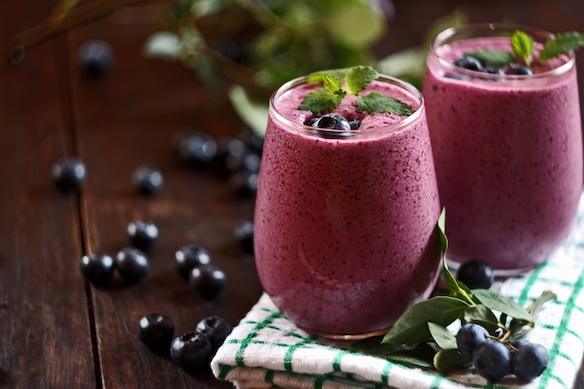When you're diagnosed with diabetes, you may experience a roller coaster of emotions. Food is an important part of our lives, and making drastic changes in our diet can feel like a daunting task.
People who are newly diagnosed with diabetes may feel overwhelmed and wonder how to get started on a new way of eating. If you're wondering how to get started, we've got you covered. Let's dive in and learn more about diabetic diets for beginners.
Diabetic diet for beginners
The first step to getting started with a diabetic meal plan is making some relatively painless changes. For example, you might swap out sugar-sweetened beverages for water. If you don't like plain water, add some flavoring to it with fruits like berries or citrus fruit. Another good place to start is by cooking at home instead of eating out.
Besides dietary changes, these lifestyle components will also help you become healthier when you're living with diabetes.
- Regular routine for meals: Get into the habit of having regular meals at the same time every day. Also, enjoy some high-fiber snacks to keep your blood sugar stable.
- Weight loss: People who are overweight can better control their blood sugar if they lose 5-10% of their body weight.
- Exercise: A combination of walking, biking, jogging, and strength training helps lower your blood sugar. Low-impact exercises like yoga are also beneficial.
- Alcohol: The American Diabetes Association (ADA) recommends that women living with diabetes should have no more than one drink every day, and men should have no more than two drinks every day.
Diabetes diet plan
As you make small changes, begin adding more non-starchy vegetables, fruits, whole grains, and lean protein to your diet.
- Protein: Eating proteins such as lean meat, eggs, chicken, fish and seafood, nuts, Greek yogurt, beans, and vegetarian proteins will help improve your blood sugar. By slowing the digestion of carbohydrates, protein keeps your blood sugar levels more stable. This means you'll feel fuller for longer.
- Fiber: Fiber isn't digested. Rather, it's broken down slowly like protein, and including plenty of beneficial fiber in your diet will help prevent sugar spikes. Choose high-fiber foods such as quinoa, oatmeal, whole-wheat bread, and whole-wheat pasta. You can also get a lot of fiber from beans, vegetables, fruits, and lentils.
These are some examples of non-starchy vegetables:
- Asparagus
- Artichokes
- Beets (they do have starch, but it's minimal)
- Brussels sprouts
- Bean sprouts
- Celery
- Carrots
- Cabbage
- Cucumbers
- Eggplant
- Dark leafy greens
- Mushrooms
- Green beans
- Okra
- Sugar snap peas
- Water chestnuts
- Cauliflower
- Peppers
- Onions
- Salad greens
- Tomatoes
- Squash and zucchini
- Turnips
Fruits with seeds and skin are the best ones for diabetic diets. These include apples, berries, dates, plums, peaches, and pears.
Pre-diabetic diet
If your medical care provider tells you that you're pre-diabetic, losing weight may help improve your blood sugar levels, according to a study published in 2022 by the International Journal of Behavioral Nutrition and Physical Activity.
Pre-diabetes is a serious health condition. However, the Centers for Disease Control and Prevention (CDC) reports that you can reverse pre-diabetes with dietary changes and weight loss.
A simple weight loss plan starts you out on about 1,500 calories per day, a level where the majority of people lose weight. Depending on your satiety levels, caloric needs, and blood sugar readings, you may benefit from a 1,200 or 2,000-calorie diet.
Discuss which option is best for you with your healthcare provider.
.jpeg)
Type 1 diabetes meal plan
In the past, type 1 diabetes used to be called juvenile diabetes. Researchers and medical professionals have since come to understand that type 1 diabetes is an autoimmune disease that causes the body to attack pancreatic cells that produce insulin. Insulin is the hormone the body uses to metabolize sugar (glucose) into energy. Essentially, insulin allows your body's cells to admit glucose, which is then turned into energy.
People living with type 1 diabetes don't produce enough—and in some cases, any—insulin. If you're living with this type of diabetes, you require regular blood sugar monitoring and daily insulin therapy.
The ADA places emphasis on three primary takeaways when it comes to healthy eating for people living with diabetes:
- Limited refined grains and added sugar
- Non-starchy vegetables
- Minimally processed foods (eat whole foods instead)
A healthy nine-inch plate for type 1 diabetes looks like this:
- ¼ of the plate filled with carbohydrates
- ¼ of the plate filled with protein
- ½ of the plate filled with non-starchy vegetables
- Healthy fats in moderation (olive oil, nuts, and avocado are examples)
%2520(2)%2520(1).jpeg)
Diabetes type 2 diet plan
Type 2 diabetes is also known as insulin resistance, a condition that affects about 40% of young adults and 33% of adults who are 65 and older. With type 2 diabetes, your body can't use insulin effectively, and glucose accumulates in your blood at levels higher than normal.
A diet plan for type 2 diabetes looks similar to that of type 1 diabetes, with some modifications. If you aren't taking medication for your diabetes, have no more than 60 grams of carbohydrates per meal. People living with type 2 diabetes can also enjoy healthy starchy vegetables in moderation. These include corn and sweet potatoes.
People living with type 2 diabetes can also eat sugar as long as it's no more than 10% of their daily calories.
The ADA has a "superstar foods" list that includes all of these:
- Beans: Black beans, kidney beans, pinto beans, and navy beans all provide minerals like potassium and magnesium. Additionally, beans are high in fiber.
- Dark green leafy veggies: Include collard greens, spinach, and kale for vitamins C, A, K, and E. Leafy greens are also packed with calcium, iron, and potassium.
- Citrus fruit: Lemons, oranges, limes, and grapefruit can help you meet your daily requirements for folate, vitamin C, and potassium.
- Berries: Strawberries, blueberries, and other types of berries provide antioxidants, fiber, and vitamins. When you satisfy your sweet tooth with berries, you also get the added benefit of vitamin K, vitamin C, fiber, potassium, and manganese.
- Tomatoes: Enjoy tomatoes however you like, whether raw, pureed, or in a sauce to add vital nutrients such as vitamin E, vitamin C, and potassium.
- Fish with omega-3 fatty acids: Fish high in essential fatty acids include salmon, mackerel, sardines, herring, albacore tuna, and trout. Enjoy your fish grilled, baked, or broiled instead of fried to avoid adding more fat and carbohydrates.
- Nuts: Healthy fat found in nuts can help you manage your hunger. Also, some seeds and nuts—flax seeds and walnuts are examples—are also excellent omega-3 fatty acids sources.
- Whole grains: Look for products with the word "whole" in them. For example, whole oats, quinoa, farro, and whole-grain barley are all good options.
Healthy diabetic eating plans for healthier living
Evidation Members can track healthy habits such as nutritious eating and physical activity. To participate in research, sign up today and download our app.











